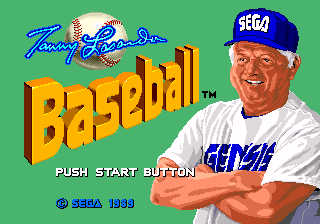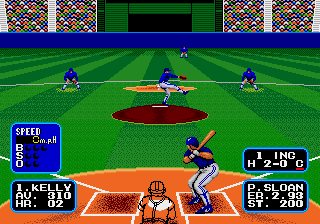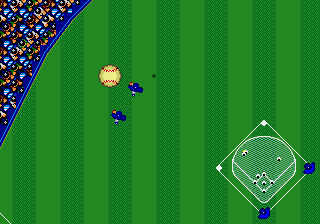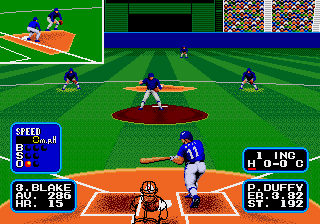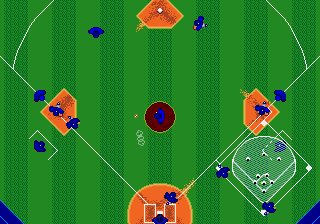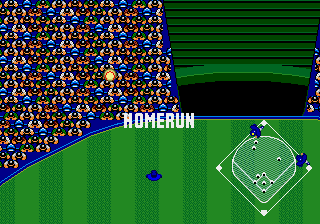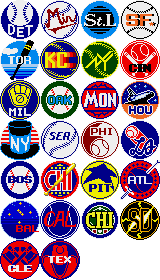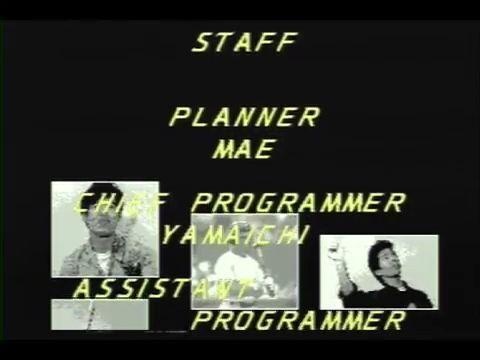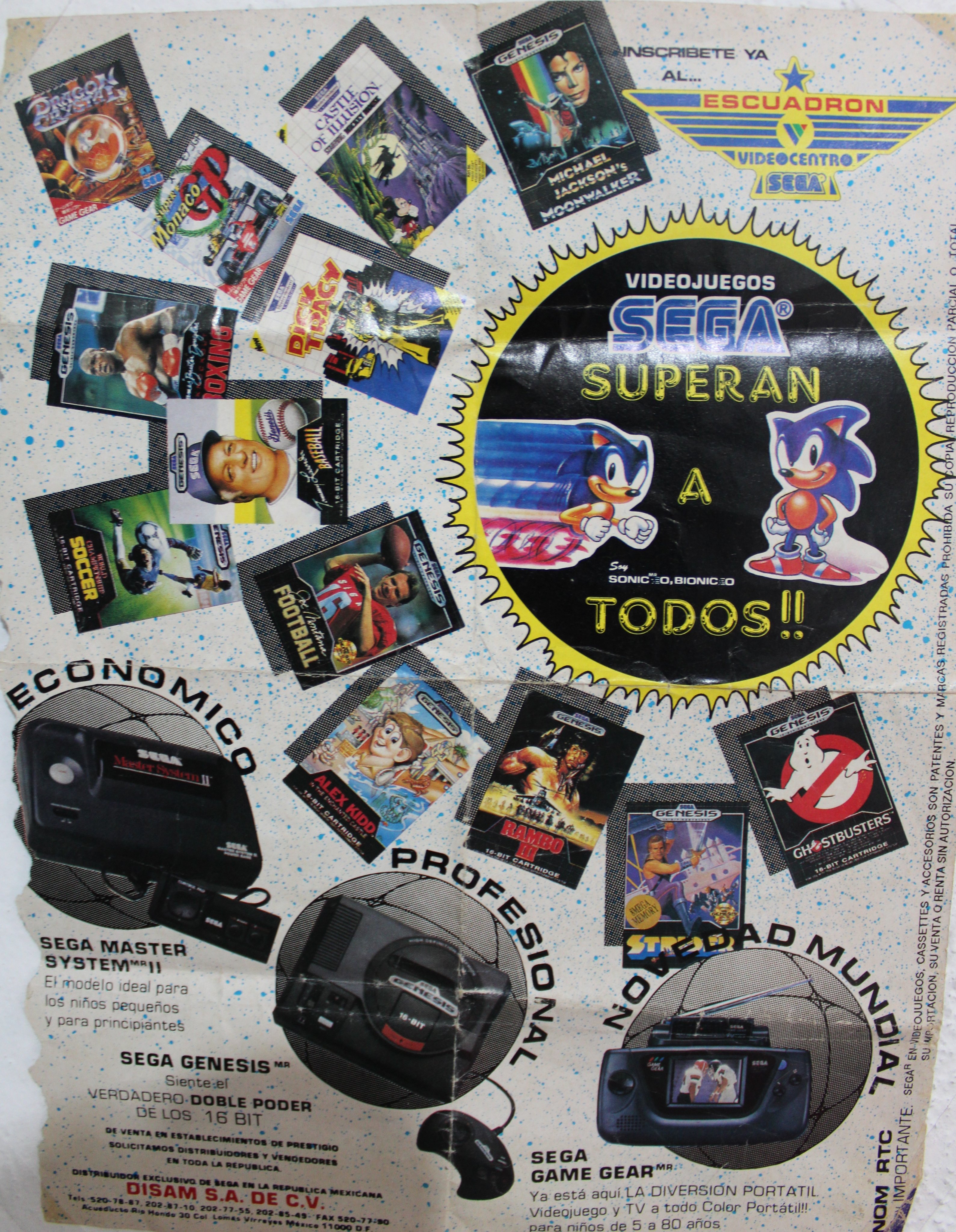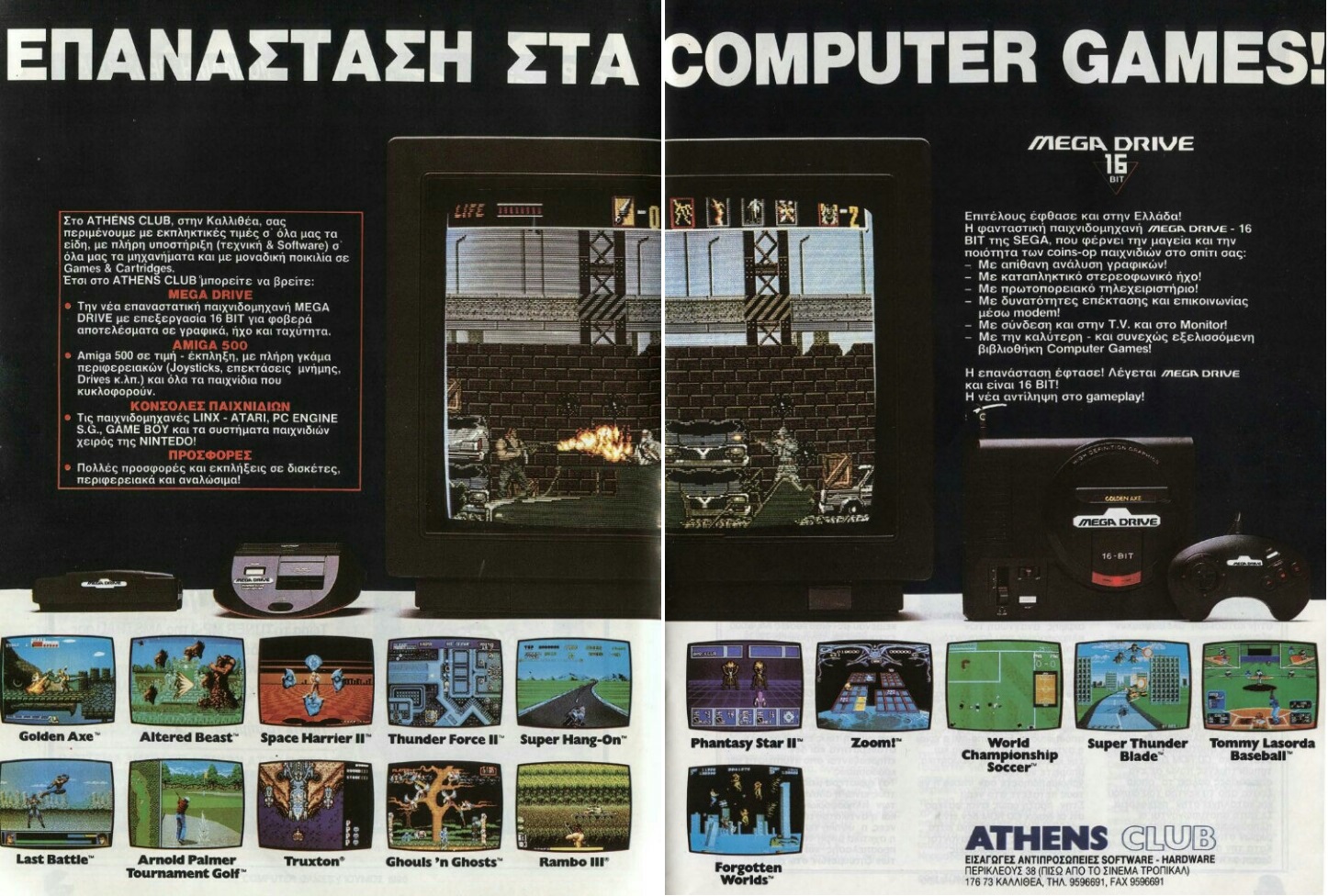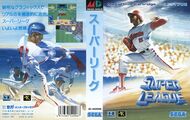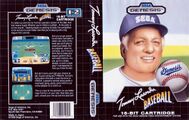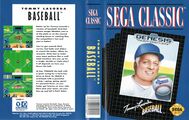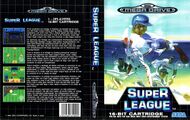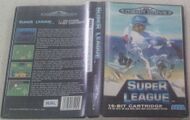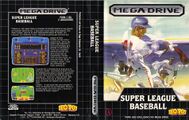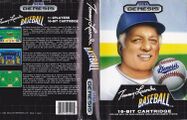Super League (Mega Drive)
From Sega Retro
| |||||||||||||||||||||||||||||||||||||||||||||||||||||||||||||||||||||
| Super League/Tommy Lasorda Baseball | |||||||||||||||||||||||||||||||||||||||||||||||||||||||||||||||||||||
|---|---|---|---|---|---|---|---|---|---|---|---|---|---|---|---|---|---|---|---|---|---|---|---|---|---|---|---|---|---|---|---|---|---|---|---|---|---|---|---|---|---|---|---|---|---|---|---|---|---|---|---|---|---|---|---|---|---|---|---|---|---|---|---|---|---|---|---|---|---|
| System(s): Sega Mega Drive, Sega Mega-Tech | |||||||||||||||||||||||||||||||||||||||||||||||||||||||||||||||||||||
| Publisher: Sega | |||||||||||||||||||||||||||||||||||||||||||||||||||||||||||||||||||||
| Developer: Sega R&D 2 | |||||||||||||||||||||||||||||||||||||||||||||||||||||||||||||||||||||
| Distributor: Hent Gruppen (SE rental), Tec Toy (BR) | |||||||||||||||||||||||||||||||||||||||||||||||||||||||||||||||||||||
| Genre: Sports[1][2] (baseball) | |||||||||||||||||||||||||||||||||||||||||||||||||||||||||||||||||||||
| Number of players: 1-2 | |||||||||||||||||||||||||||||||||||||||||||||||||||||||||||||||||||||
|
Super League (スーパーリーグ), known in the United States as Tommy Lasorda Baseball, is a Mega Drive baseball game developed by Sega R&D 2 and published by Sega in 1984.[2][3]
The American version of the game was endorsed by Tommy Lasorda, who was manager of the Los Angeles Dodgers at the time. It was one of the console's launch titles in that region.
Contents
Gameplay
The game is a major league baseball game. The Western versions features teams modeled after Major League Baseball, while the Japanese version teams are based on the Nippon Professional Baseball league. Player names and statistics are fictional.
Before each game, players can change the batting order and the starting pitchers. Player one is always the visitor and bats first.
Modes
The game modes are named differently depending on the region of the game:
- U.S. East/West Mode and World East/West Mode (C-League Mode and P-League Mode in the Japanese version): Starts a 30-game season. This mode is for one player competing against computer-controlled teams. The name of the mode indicates the league and the division (or just the league in the Japanese version) of the teams available. If the player wins the league championship, the player's team progresses to the World Series in the Western versions or the Nippon Series in the Japanese version, a best-of-seven game playoff series. The game uses a password for continuing.
- Open Game (Open Mode in the Japanese version): A single game for one player against a computer opponent. The player can choose any team to play and for the opponent.
- Exhibition Game (Vs Mode in the Japanese version): A single game for two players competing against one another. Players can choose any team to play.
In the options, the player can set the computer difficulty (Easy, Normal, or Hard) and whether to bias the game towards pitchers or batters or have an equal game of skill between both. There are also toggles for fielding errors and the ball marker (that shows where the ball will land) and three settings for wind (Off for no wind, Easy for slight wind effects on the ball, and Hard for possibly major wind effects on the ball, especially when it is hit high into the air).
Teams
No versions of Super League carry official licenses from baseball organisations. However, both the Japanese and Western versions use teams inspired by their real life counterparts. Likewise, all player names are fictional.
Western versions
In the West, teams are based on those that competed in the 1989 Major League Baseball season. The "U.S. League" corresponds to the American League, and the "World League" corresponds to the National League.
| League | Division | Team | Based on |
|---|---|---|---|
| U.S. | Eastern | DET | Detroit Tigers |
| TOR | Toronto Blue Jays | ||
| MIL | Milwaukee Brewers | ||
| NY | New York Yankees | ||
| BOS | Boston Red Sox | ||
| BAL | Baltimore Orioles | ||
| CLE | Cleveland Indians | ||
| Western | MIN | Minnesota Twins | |
| KC | Kansas City Royals | ||
| OAK | Oakland Athletics | ||
| SEA | Seattle Mariners | ||
| CHI | Chicago White Sox | ||
| CAL | California Angels | ||
| TEX | Texas Rangers | ||
| World | Eastern | STL | St. Louis Cardinals |
| NY | New York Mets | ||
| MON | Montreal Expos | ||
| PHI | Philadelphia Phillies | ||
| PIT | Pittsburgh Pirates | ||
| CHI | Chicago Cubs | ||
| Western | SF | San Francisco Giants | |
| CIN | Cincinnati Reds | ||
| HOU | Houston Astros | ||
| LA | Los Angeles Dodgers | ||
| ATL | Atlanta Braves | ||
| SD | San Diego Padres |
Japanese version
In Japan, the teams are based on those of the 1989 Nippon Professional Baseball season.
| League | Division | Team | Based on |
|---|---|---|---|
| U.S. | Central | Dracons | Chunichi Dragons |
| Gaints | Yomiuri Giants | ||
| Carves | Hiroshima Toyo Carp | ||
| Sallows | Yakult Swallows | ||
| Whoels | Yokohama Taigou Whales | ||
| Tiders | Hanshin Tigers | ||
| Pacific | Leopons | Seibu Lions | |
| Buffals | Kintetsu Buffaloes | ||
| Figers | Nippon-Ham Fighters | ||
| Brives | Orix Braves | ||
| Hawkas | Fukuoka Daiei Hawks | ||
| Orvons | Lotte Orions |
Production credits
- Planner: Mae
- Chief Programmer: Yamaichi
- Assistant Programmer: Mizoran
- Graphic Coordinator: Tamun, Wood One, Autumn
- Ground Designer: Tamun
- Fielder Designer: Wood One, Autumn, Big Island, Toyo Ozaki
- Sound Coordinator: Roge
- Director: Yamaichi, Mae
- Special Thanks: Ryuchan, Min, Works Nishi, Kota, Si Extra, Morii, Stresteles, Lee, Lander, Kuma, Uru Uru, Tatsu, Usida Moo, Nekoda Nya, Inuda Wan, Umada Hihiin
- Presented by: Sega
- Japanese cover artist: Hiroaki Shioya
Magazine articles
- Main article: Super League (Mega Drive)/Magazine articles.
Promotional material
Physical scans
Mega Drive version
| ExpandSega Retro Average |
|---|
| 72 | |
|---|---|
| Based on 21 reviews | |
| Mega Drive, US (Sega Classic) |
|---|
| Mega Drive, SE (rental; Hent; black) |
|---|
Mega-Tech version
| Mega-Tech, |
|---|
|
Technical information
- Main article: Super League (Mega Drive)/Technical information.
ROM dump status
| System | Hash | Size | Build Date | Source | Comments | |||
|---|---|---|---|---|---|---|---|---|
| ? | 512kB | 1989-05 | Cartridge (US) | Tommy Lasorda Baseball | ||||
| ✔ | 512kB | 1989-05 | Cartridge (US) | Tommy Lasorda Baseball (Rev. A) | ||||
| ? | 512kB | 1989-05 | Cartridge (EU) | Super League | ||||
| ✔ | 512kB | 1989-02 | Cartridge (JP) | Super League | ||||
| ? | 1989-04-30 | Page |
References
- ↑ File:SuperLeague MD JP Box.jpg
- ↑ Jump up to: 2.0 2.1 2.2 https://sega.jp/history/hard/megadrive/software.html (Wayback Machine: 2020-07-20 09:51)
- ↑ Jump up to: 3.0 3.1 Computer Entertainer, "October 1989" (US; 1989-10-20), page 15
- ↑ GamePro, "February 1990" (US; 19xx-xx-xx), page 51
- ↑ Sega Visions, "August/September 1992" (US; 1992-xx-xx), page 20
- ↑ Sega Channel schedule (US; 1994-06-01)
- ↑ https://www.youtube.com/watch?v=MERwuwZK9YM (Ghostarchive)
- ↑ Jump up to: 8.0 8.1 Raze, "April 1991" (UK; 1991-02-28), page 53
- ↑ Sega Power, "April 1991" (UK; 1991-03-07), page 21
- ↑ File:Super League MD credits.pdf
- ↑ Sega TV Game Genga Gallery, Graphic Sha, page 128
- ↑ Electronic Gaming Monthly, "July 1990" (US; 1990-xx-xx), page 9
- ↑ Electronic Gaming Monthly, "August 1990" (US; 1990-xx-xx), page 7
- ↑ GamePro, "July 1990" (US; 1990-xx-xx), page 61
- ↑ VideoGames & Computer Entertainment, "July 1990" (US; 1990-0x-xx), page 59
- ↑ 1700 igr dlya Sega, "" (RU; 2001-xx-xx), page 249
- ↑ Aktueller Software Markt, "Januar 1990" (DE; 1989-1x-xx), page 58
- ↑ Beep! MegaDrive, "February 1990" (JP; 1990-01-08), page 72
- ↑ Complete Guide to Consoles, "Volume IV" (UK; 1990-11-xx), page 36
- ↑ The Complete Guide to Sega, "" (UK; 1991-05-xx), page 49
- ↑ Console XS, "June/July 1992" (UK; 1992-04-23), page 134
- ↑ Computer & Video Games, "May 1991" (UK; 1991-04-14), page 76
- ↑ Electronic Gaming Monthly, "November 1989" (US; 1989-xx-xx), page 13
- ↑ Joystick, "Février 1991" (FR; 1991-0x-xx), page 115
- ↑ Sega Mega Drive Advanced Gaming, "January 1993" (UK; 199x-xx-xx), page 94
- ↑ Mega Drive Fan, "November 1989" (JP; 1989-10-07), page 49
- ↑ MegaTech, "Xmas 1991" (UK; 1991-12-06), page 80
- ↑ Mean Machines Sega, "October 1992" (UK; 1992-09-xx), page 142
- ↑ Play Time, "6/92" (DE; 1992-05-06), page 94
- ↑ Score, "Srpen 1994" (CZ; 1994-08-01), page 58
- ↑ Sega Power, "April 1991" (UK; 1991-03-07), page 20
- ↑ Sega Power, "October 1991" (UK; 1991-09-05), page 54
- ↑ Sega Pro, "April 1992" (UK; 1992-03-19), page 30
- ↑ Sega Pro, "April 1993" (UK; 1993-03-11), page 68
- ↑ Sega Saturn Magazine, "September 1995" (JP; 1995-08-08), page 87
| CollapseSuper League (Mega Drive) | |
|---|---|
|
Main page | Comparisons | Hidden content | Magazine articles | Reception | Region coding
Prototypes: 1989-04-30
| |
| CollapseGames in the Super League series | |
|---|---|
| Super League (System 16) (1987) | Super League (Mega Drive) (1989) | Clutch Hitter (1991) | Pro Yakyuu Super League '91 (1991) | Sports Talk Baseball (1992) | Pro Yakyuu Super League CD (1992) | Egawa Suguru no Super League CD (1993) | |
- 1-2 player games
- JP Mega Drive games
- All JP games
- US Mega Drive games
- All US games
- Sega Classic games
- US Sega Channel games
- EU Mega Drive games
- All EU games
- EU Sega Channel games
- UK Mega Drive games
- All UK games
- SE Mega Drive games
- All SE games
- AU Mega Drive games
- All AU games
- CA Mega Drive games
- All CA games
- BR Mega Drive games
- All BR games
- SA Mega Drive games
- All SA games
- SA Sega Channel games
- Mega Drive games
- 1989 Mega Drive games
- All 1989 games
- Mega Drive baseball games
- Mega Drive sports games
- All sports games
- All arcade games
- Mega-Tech games
- Unknown year games
- Arcade baseball games
- Arcade sports games
- All games
- Missing ROM hashes
- Games with known prototypes
- Old technical information
- Super League (Mega Drive)
- Super League

